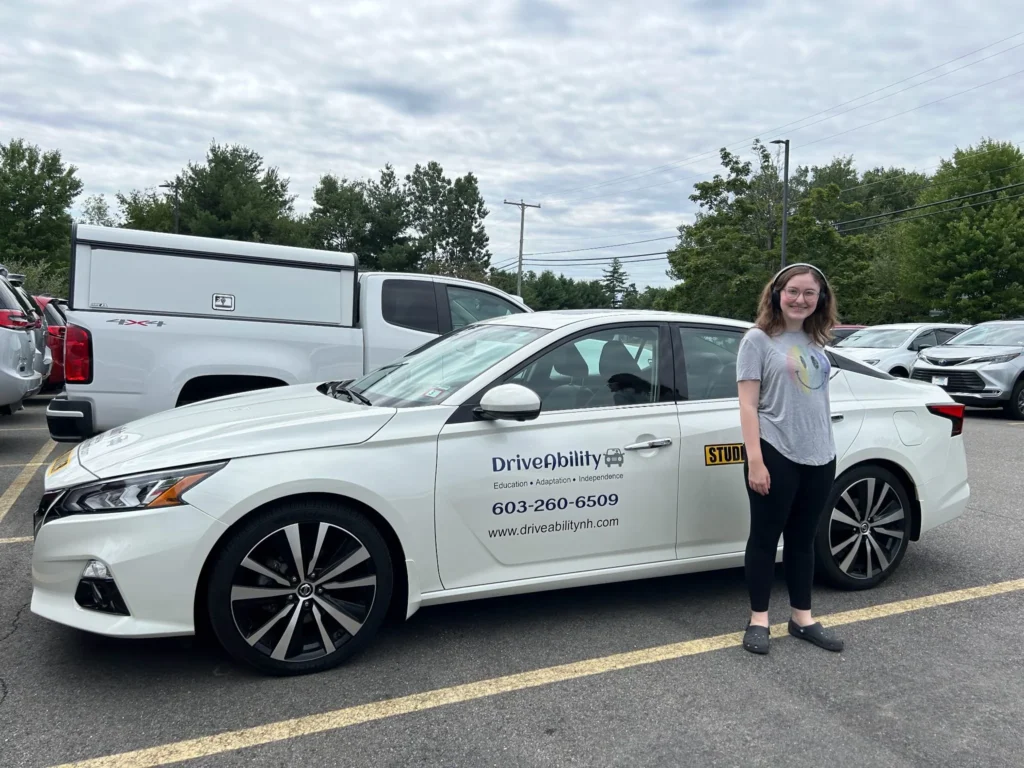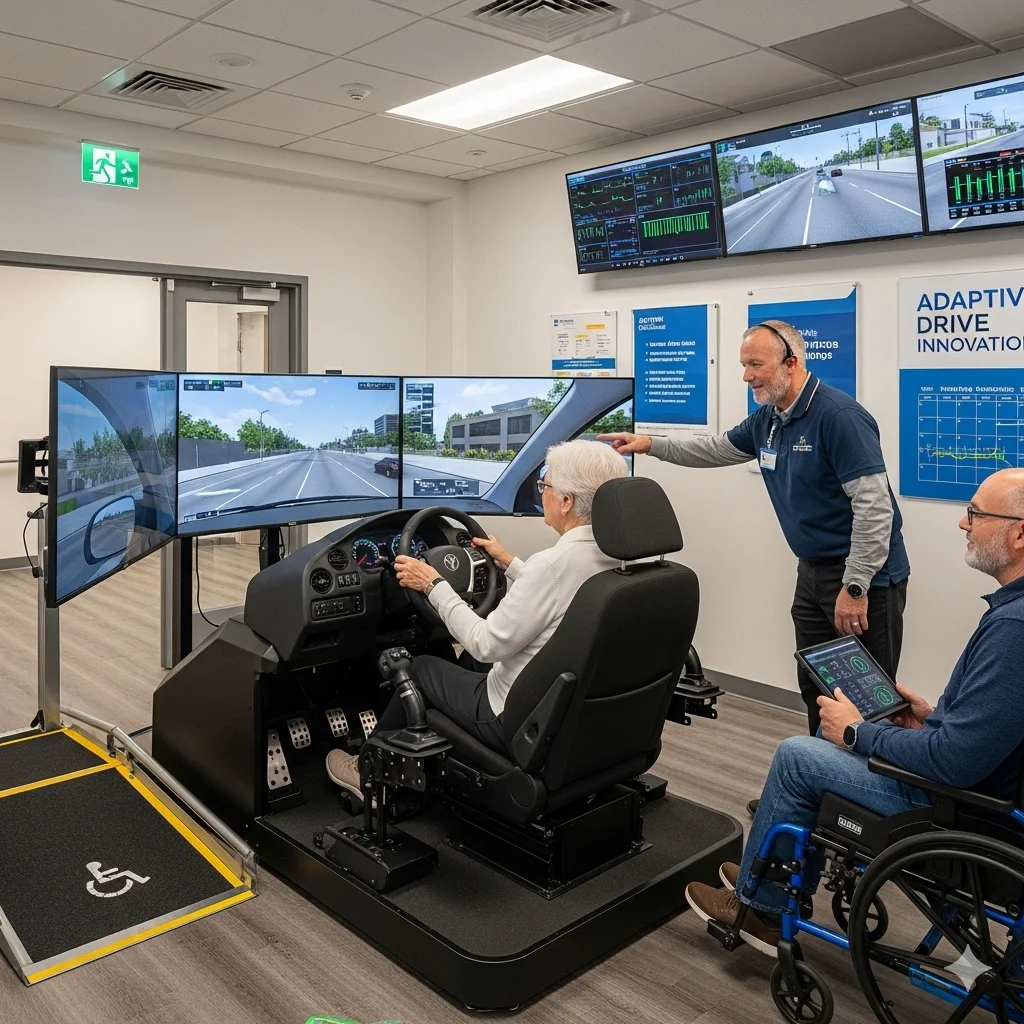The ability to drive represents far more than just getting from one place to another. For many, driving is a symbol of freedom, self-reliance, and the opportunity to stay connected to the community. Yet for individuals with physical limitations—whether due to aging, illness, or injury—the road back to driving can feel uncertain.
That’s where high-tech driving programs come in. Built around the principles of driver rehabilitation and advanced adaptive driving equipment, these programs make it possible for seniors, stroke survivors, and people living with disabilities to drive safely and confidently again.
This article explores how high-tech driving programs work, who can benefit from them, the role of specialists in the process, and how they support independence and safety on the road—especially for drivers in New Hampshire who want to remain active members of their community.
What Is a High-Tech Driving Program?
High-tech driving programs are part of a broader field known as driver rehabilitation. Unlike traditional driver education, which focuses on teaching new drivers basic skills, driver rehabilitation focuses on helping individuals overcome challenges that may prevent them from driving safely.
A high-tech driving program introduces specialized technologies—such as hand controls, joystick steering systems, or voice-activated commands—to replace or support the standard controls of a vehicle. These systems are carefully matched to a person’s physical needs, ensuring that they can operate a vehicle comfortably and without risk.
For example:
- A person with limited use of their legs might use hand controls for acceleration and braking.
- A stroke survivor with limited mobility on one side might rely on spinner knobs or reduced-effort steering.
- A driver with more complex needs could benefit from high-tech driving systems like joystick steering or advanced touchpad controls.
The goal is simple: to provide every individual, no matter their physical challenge, with the tools and training necessary to drive safely and confidently.
Who Benefits from High-Tech Driving Programs?
High-tech driving programs are designed for people whose physical or neurological conditions make it difficult or impossible to use standard vehicle controls. Some of the most common groups who benefit include:
1. Seniors Facing Age-Related Changes As part of the natural aging process, seniors often experience slower reaction times, reduced strength, arthritis, or vision changes. While these factors can make traditional driving more challenging, senior driving programs with adaptive technology help older adults remain behind the wheel safely. For example, a senior experiencing arthritis in their knees may find pressing pedals painful. By transitioning to hand controls, they can continue to drive comfortably without stress on their joints.
2. Stroke Survivors Driving after a stroke is often a major concern for survivors and their families. A stroke can result in muscle weakness, coordination difficulties, or cognitive changes. High-tech driving programs assess these limitations and provide solutions like spinner knobs, reduced-effort steering, or one-handed controls. With proper driver rehabilitation, many stroke survivors are able to return to driving safely, restoring their independence and confidence.
3. Individuals with Physical Disabilities People with spinal cord injuries, amputations, or neuromuscular conditions can benefit greatly from high-tech adaptations. For some, this might mean advanced joystick or touchpad driving systems that allow them to operate a vehicle without relying on traditional controls. These systems are not one-size-fits-all—they are customized to each individual’s abilities and needs.
4. Veterans and Others with Complex Needs High-tech driving programs are also vital for veterans who may have sustained injuries that affect mobility. Adaptive technology provides them with an avenue to regain their sense of freedom and independence through driving.
The Role of Adaptive Driving Equipment
At the heart of every high-tech driving program is adaptive driving equipment. This equipment ranges from basic tools like pedal extensions to sophisticated electronic driving systems. Here are a few key examples:
- Hand Controls: Allow the driver to control acceleration and braking with their hands rather than their feet.
- Steering Aids: Devices like spinner knobs, tri-pins, or palm grips that make steering possible with one hand or limited strength.
- Reduced-Effort Steering/Braking: Modifications that lower the amount of force needed to turn the wheel or press the brake.
- Electronic Secondary Controls: Systems that control wipers, turn signals, and lights through switches or touchpads.
- High-Tech Joysticks and Touchpads: Advanced systems that allow complete vehicle operation with minimal physical effort.
Every piece of adaptive driving equipment is tailored to the driver’s needs and installed by certified technicians to ensure safety and compliance.
The Importance of Driver Rehabilitation Specialists

Technology alone is not enough to ensure safe driving. A critical piece of the puzzle is the expertise of driver rehabilitation specialists. These professionals are typically occupational therapists with specialized training in evaluating driving ability and recommending modifications.
Here’s what they do:
- Comprehensive Evaluation: Assessing physical, cognitive, and visual abilities to determine whether driving is safe and what adaptations may be required.
- Equipment Trials: Giving individuals the opportunity to test different adaptive driving equipment before committing to an installation.
- Training Programs: Providing one-on-one instruction in the use of new technology, ensuring that drivers are comfortable and confident.
- Vehicle Recommendations: Advising on what types of vehicles are best suited for modifications.
- Ongoing Support: Adjusting programs as needs change over time.
Without the guidance of a driver rehabilitation specialist, even the most advanced high-tech equipment may not meet the driver’s needs. Specialists ensure that technology is matched to ability, maximizing safety and independence.
Benefits of High-Tech Driving Programs
High-tech driving programs offer life-changing benefits for seniors, stroke survivors, and people with disabilities. Some of the key benefits include:
- Restored Independence: Being able to drive again means freedom to work, shop, visit friends, or attend appointments without relying on others.
- Enhanced Safety: Equipment is matched specifically to the driver’s abilities, reducing risk on the road.
- Increased Confidence: Training with specialists ensures that drivers feel secure in their skills before returning to independent driving.
- Community Engagement: Driving keeps individuals connected to their community and supports overall mental health and well-being.
- Customized Solutions: Each program is designed for the individual—there’s no one-size-fits-all approach.
The Future of High-Tech Driving
Technology is advancing rapidly, and the future of high-tech driving looks even more promising. From semi-autonomous vehicles that can assist with lane changes and braking, to fully autonomous systems currently in testing, the potential to support individuals with disabilities is growing.
However, until self-driving cars become widely available, high-tech driving programs remain the most practical and immediate solution for those who need adaptive assistance today.
Getting Started with a High-Tech Driving Program in New Hampshire
If you or a loved one is considering a high-tech driving program, the first step is an evaluation with a qualified driver rehabilitation specialist. In New Hampshire, programs like those offered by DriveAbility LLC provide comprehensive assessments and access to vehicles equipped with a wide range of adaptive driving equipment.
The process typically involves:
- Initial Consultation: Discuss your goals, challenges, and medical history.
- Assessment: A licensed occupational therapist evaluates your physical, cognitive, and visual abilities.
- Trial of Equipment: You’ll be able to test different adaptations in a safe, controlled environment.
- Training Sessions: Hands-on driving instruction ensures you’re fully confident using the new equipment.
- Vehicle Recommendations: Specialists advise on which vehicles can be modified to meet your needs.
- Follow-Up: Support continues even after you’re back on the road.
For many, this journey represents the bridge between uncertainty and independence. With the right support and technology, driving doesn’t have to be a thing of the past.
Conclusion
Driving is more than just transportation—it’s a vital part of independence, confidence, and connection. For seniors, stroke survivors, and individuals with disabilities, the fear of losing that independence can feel overwhelming. Thankfully, high-tech driving programs supported by driver rehabilitation specialists and adaptive driving equipment are making it possible to stay safely behind the wheel.
Whether you’re facing mobility challenges due to aging, recovering from a stroke, or navigating life with a disability, these programs offer customized solutions to restore freedom and independence. In New Hampshire, resources like DriveAbility LLC are leading the way, giving people the chance to drive with confidence again.
If you or someone you know could benefit from a high-tech driving program, now is the time to take the first step. Your road to independence may be closer than you think.

